
Roots
To stand at the precipice of understanding textured hair heritage, particularly the journey of cornrows during enslavement, is to gaze into a profound wellspring of human spirit. It is an invitation to listen to the whispers carried on the wind from distant shores, echoes of resilience, ingenuity, and a tenacious hold on identity. For those whose ancestry flows through the currents of the transatlantic forced migration, this exploration is not merely academic; it is a communion with the very fibers of being, a connection to the wisdom that shaped survival and sustained cultural memory. We delve into a legacy etched not in stone, but in the living crown of the head, a testament to what was preserved amidst the most brutal attempts at erasure.
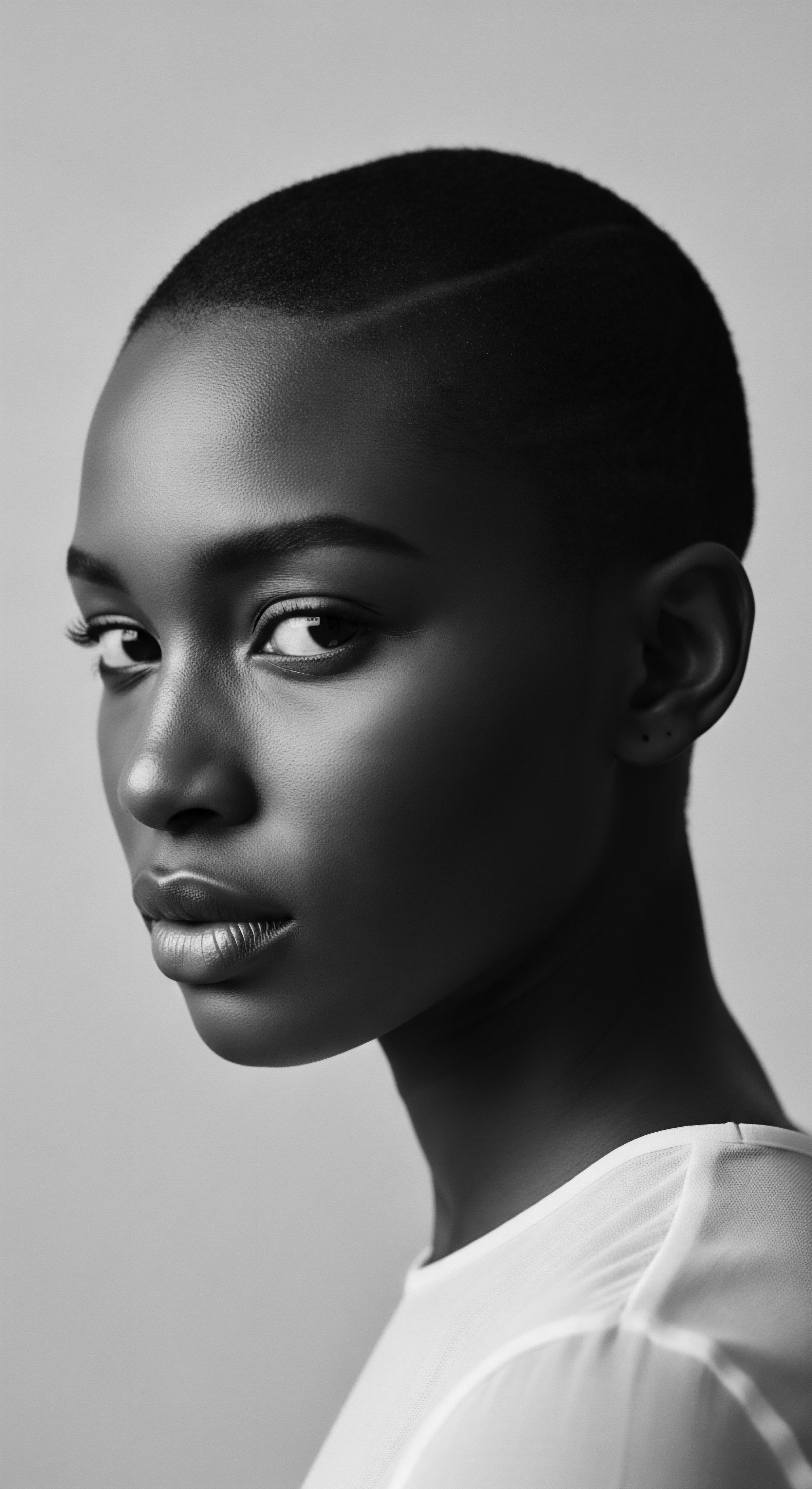
Ancestral Strands ❉ Hair’s Earliest Language
Before the chains, before the ships, hair in African societies was a vibrant, living canvas of identity. It spoke volumes without uttering a single sound, conveying a person’s age, marital status, social standing, religious beliefs, and even tribal affiliation. Ancient rock art from the Tassili Plateau of the Sahara, dating back to at least 3000 BC, offers visual testament to women adorned with intricate cornrow patterns, demonstrating the enduring presence of this styling technique across millennia. In ancient Egypt, cornrows and braids, often embellished with gold thread and other precious materials, were not just aesthetic choices but markers of social rank and spiritual connection.
The practice of sculpting hair, sometimes with natural elements like clay or even using hair shorn from others as extensions, was deeply embedded in daily life and ceremonial practices across the continent. This rich heritage, where hair was considered a conduit to the divine and a source of personal power, underscores the spiritual significance of these practices.
Hair in pre-colonial African societies served as a sophisticated visual language, communicating identity, status, and spiritual connection.
The communal act of hair care itself fostered deep bonds, passing down ancestral knowledge and strengthening kinship ties. Mothers and elder women would spend hours braiding the hair of younger generations, a ritual of tenderness and instruction, weaving not only strands but also stories and cultural values into each pattern. This tradition was a vital part of the fabric of African life, a shared experience that reinforced community and belonging.

The Brutality of Erasure ❉ Why Was Hair Targeted?
The arrival of the transatlantic forced migration brought an unimaginable assault on African humanity, and hair became a direct target in this dehumanization. One of the first acts perpetrated upon captured Africans during the Middle Passage was the shaving of their heads. This act was far from a mere sanitary measure; it was a calculated attempt to strip individuals of their cultural identity, sever their connection to their heritage, and dismantle their sense of self. The elaborate hairstyles that once declared lineage, marital status, or spiritual devotion were violently removed, leaving individuals disoriented and severed from a powerful symbol of their past.
Yet, even in this brutal context, the resilience of the human spirit, particularly the spirit of African people, proved indomitable. Despite the lack of traditional tools, oils, and the communal time once dedicated to hair care, enslaved Africans found ways to preserve aspects of their hair heritage. The tightly coiled, textured hair, often deemed “unruly” by European standards, required specific care and styling that cornrows, also known as canerows in the Caribbean, naturally provided. This practical aspect, combined with an inherent drive to maintain cultural ties, saw cornrows persist and even evolve within the oppressive confines of enslavement.
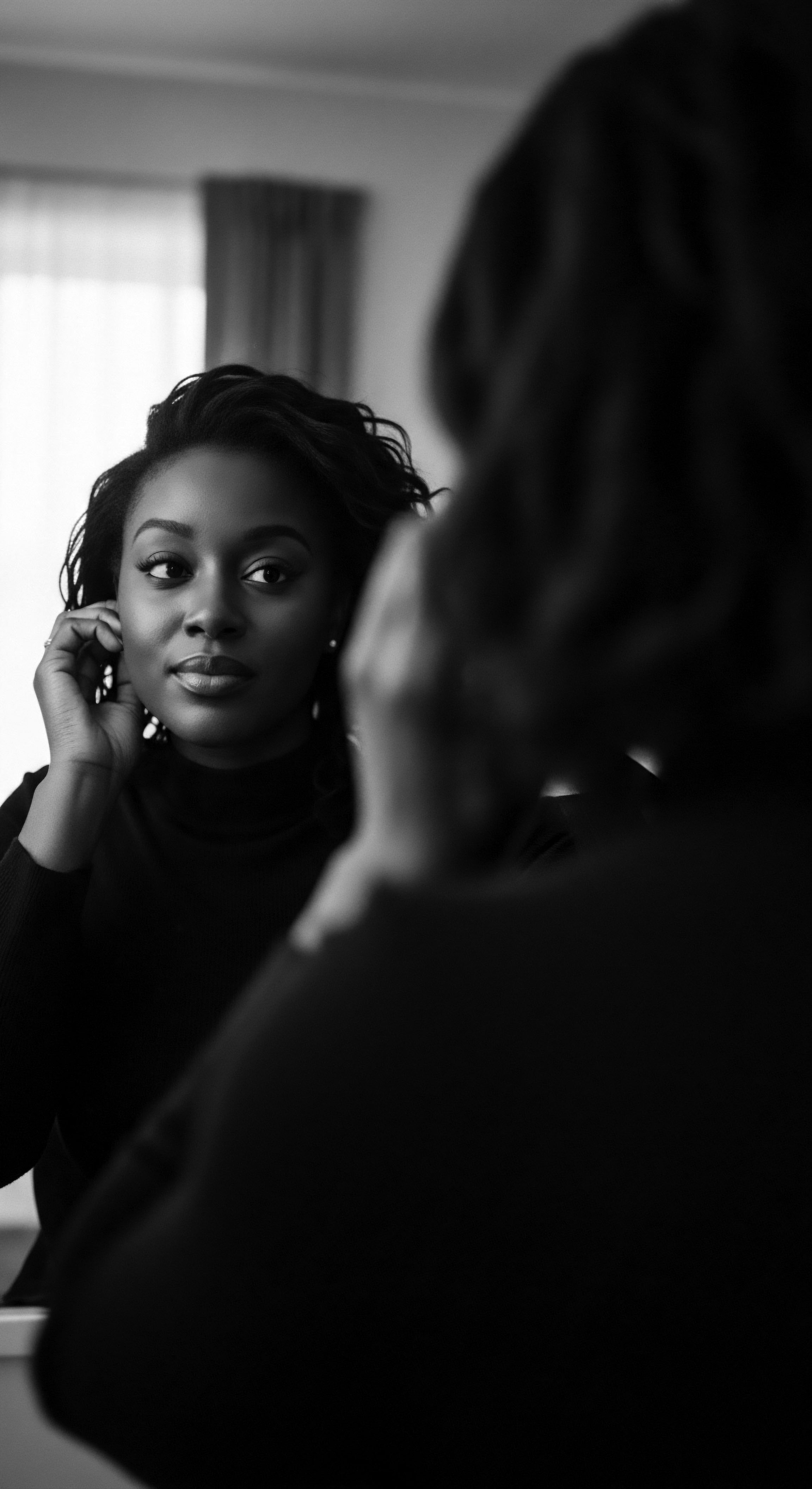
Ritual
As we move from the fundamental understandings of textured hair’s ancient roots, we step into a space where ancestral practices transformed into rituals of quiet resistance and enduring care. The journey of cornrows during enslavement speaks to a profound adaptability, where the practical necessities of survival intertwined with the unwavering spirit of cultural preservation. Here, the very act of styling hair became a deeply personal and communal practice, shaping not only outward appearance but also internal fortitude, drawing upon the inherent wisdom of generations.

Cornrows as Covert Communication ❉ A Language of Liberation?
The harsh realities of plantation life, with its constant surveillance and severe restrictions on communication, forced enslaved Africans to develop ingenious methods of covert information exchange. It is in this context that the role of cornrows as a tool for silent communication gains powerful resonance. Historical accounts and oral traditions speak of cornrow patterns being used to encode messages, maps, and escape routes.
One of the most compelling narratives originates from Colombia, where Benkos Biohó, a captured royal from the Bissagos Islands, escaped slavery and established San Basilio de Palenque, a free village. Biohó reportedly established an intelligence network where women would create “maps” within their cornrows to guide others to freedom. These intricate designs, appearing as mere aesthetic choices to unknowing overseers, held vital information.
A particular number of braids might signify the number of roads to travel, or a curved braid could represent a winding river. Converging rows might even mark a meeting point or a safe haven.
Cornrows became a hidden language, their patterns subtly conveying escape routes and vital information to those seeking freedom.
This sophisticated system of communication highlights the remarkable ingenuity of enslaved people. It allowed for the discreet transfer of knowledge without written documents, which would have been easily intercepted and understood by their captors. The very act of braiding became a communal ritual of hope and solidarity, where skilled hands worked in quiet determination, weaving a path toward liberation.
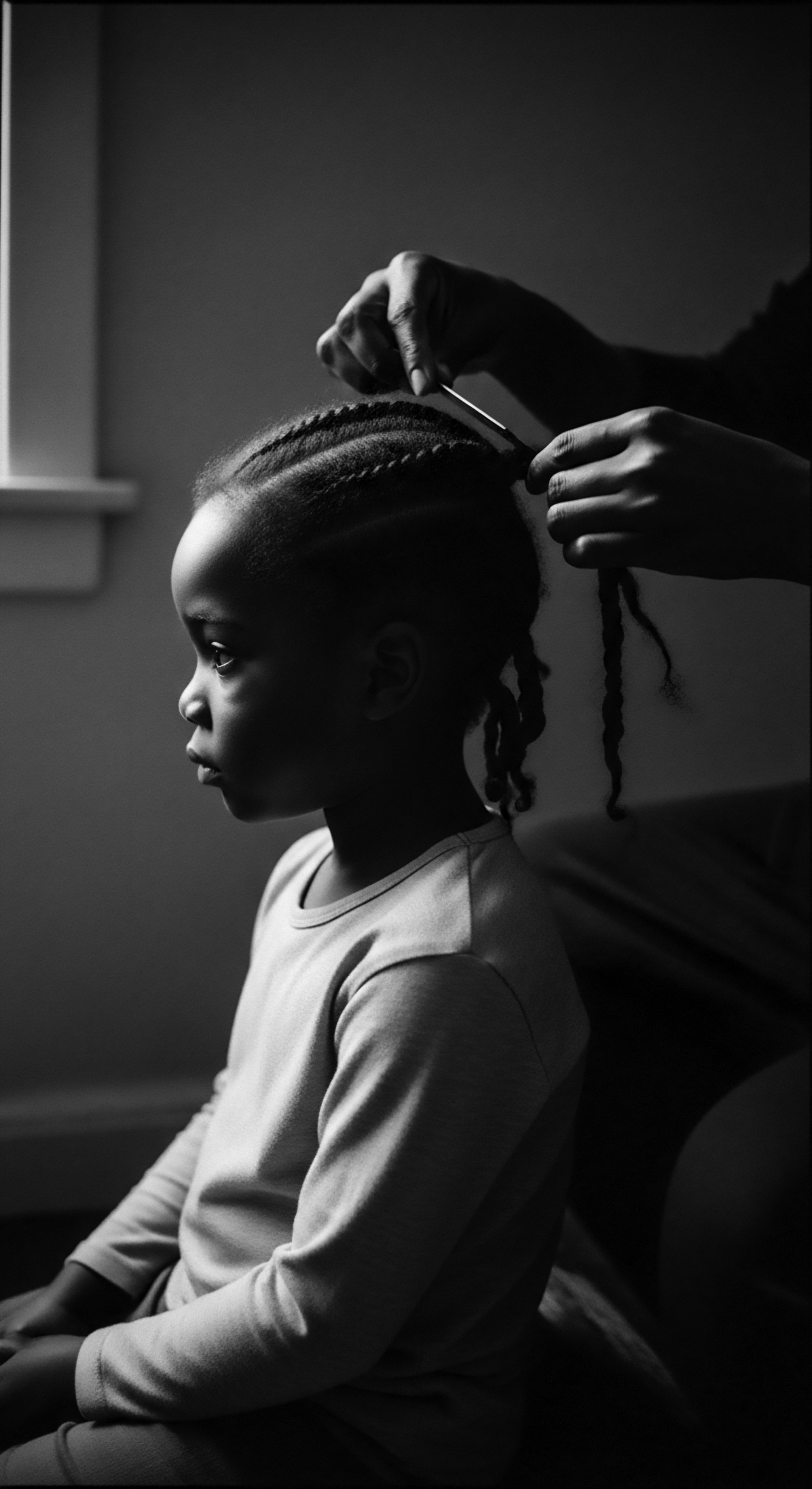
Sustenance and Survival ❉ Seeds of Hope in Braids
Beyond their function as coded maps, cornrows also served a practical purpose in the arduous journeys to freedom ❉ they became hidden repositories for sustenance. Enslaved individuals would discreetly conceal seeds, gold fragments, or small amounts of food within their tightly braided hair. This practice offered a means of carrying vital provisions without detection, providing nourishment during perilous escapes or enabling the cultivation of crops once freedom was attained.
This practice is particularly striking as a testament to the foresight and survival instincts cultivated under extreme duress. The seeds carried within the braids were not simply food; they were symbols of future possibility, of planting roots in new, free soil, and of rebuilding lives. The presence of a specific grain of rice from Africa in Suriname, a place where many enslaved people found refuge, is often cited as a powerful, albeit anecdotal, example of this historical practice.
| Item Seeds |
| Significance and Purpose Provided sustenance during escape and for future cultivation in liberated settlements. |
| Item Gold Nuggets |
| Significance and Purpose Offered a means of exchange or a foundation for rebuilding life after escape, particularly from mining areas. |
| Item Small Tools |
| Significance and Purpose Could be utilized for survival needs once away from the plantations. |
| Item Bold Fragments / Food |
| Significance and Purpose Provided immediate nourishment during the physically demanding journey to freedom. |
| Item These hidden items speak to the ingenuity and resourcefulness employed to secure survival and hope amidst profound adversity. |

Protective Styling ❉ A Practical Necessity and Cultural Affirmation
The term “cornrows” itself, believed to have originated in colonial America between the 16th and 19th centuries, draws a parallel to the agricultural fields—corn or sugar cane—that enslaved people were forced to work. Yet, this naming, born of the oppressor’s gaze, belies the deep, ancestral roots and practical benefits of the style. Cornrows, with their tightly woven structure close to the scalp, were an ideal protective style for textured hair.
In the harsh conditions of plantation life, with demanding physical labor and limited access to proper hair care products or tools, cornrows offered a manageable and hygienic solution. They kept hair neat, prevented tangling, and protected the scalp from the sun and elements. This practical utility allowed enslaved individuals to maintain a semblance of order and care for their hair, which was otherwise prone to becoming matted and damaged due to lack of resources.
Beyond practicality, wearing cornrows was a quiet, yet powerful, act of cultural affirmation and resistance. In a system designed to strip away every vestige of African identity, maintaining traditional hairstyles was a way to cling to heritage, express individuality, and assert bodily autonomy when none was granted. It was a visual declaration of self, a connection to the continent left behind, and a silent rebellion against forced cultural erasure. This enduring presence of cornrows during enslavement underscores their significance as a symbol of resilience and an unbreakable link to African identity.

Relay
Having explored the foundational presence and practical applications of cornrows during enslavement, we now ascend to a more profound inquiry ❉ how did this ancestral practice, born of necessity and defiance, reshape the very fabric of Black and mixed-race cultural narratives, and what enduring lessons does it offer for our understanding of textured hair heritage today? The journey of cornrows from the fields of forced labor to their current place as a celebrated symbol is a testament to the power of cultural memory, a story where science, history, and the human spirit converge to illuminate a path forward.
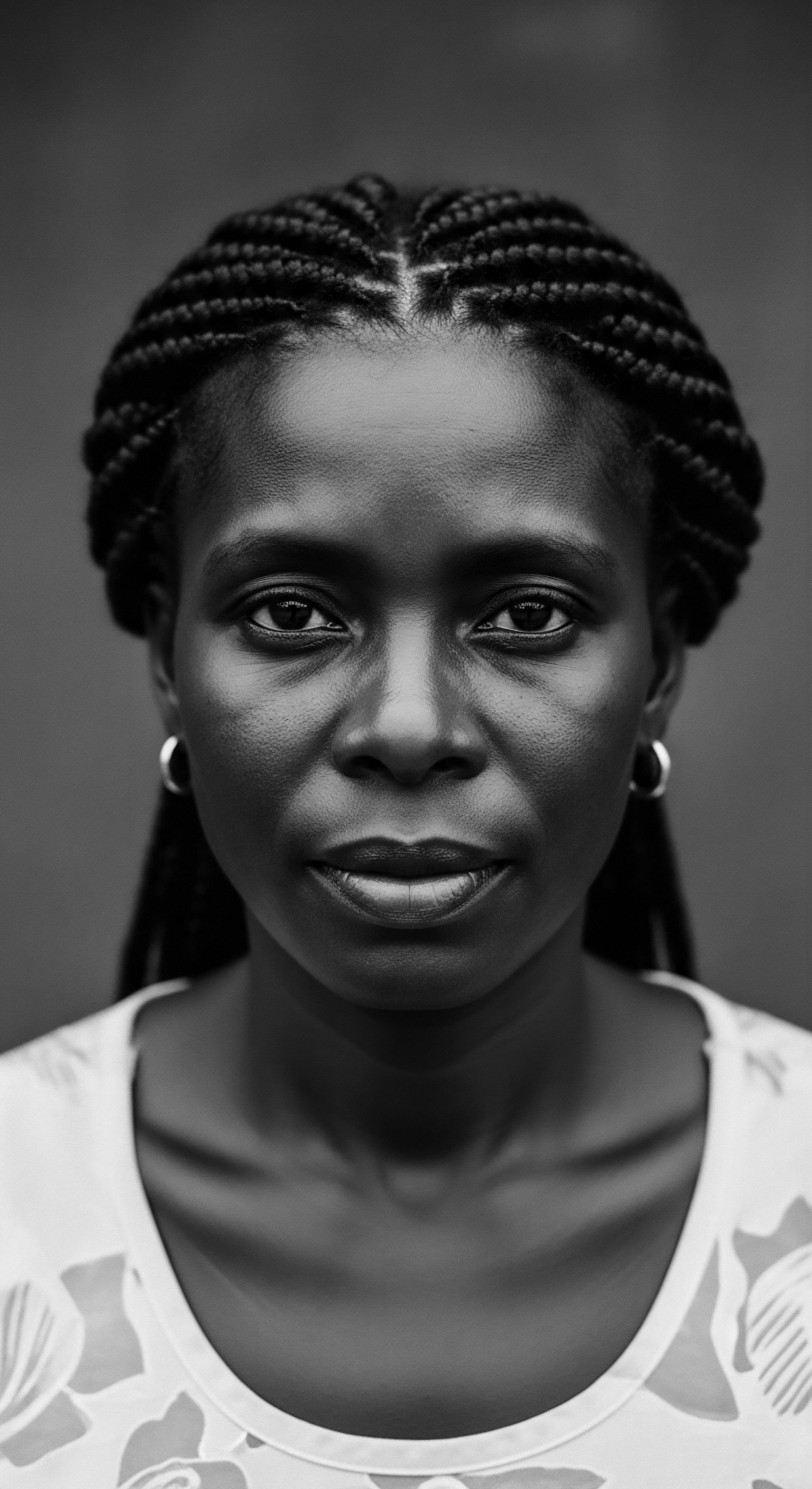
How Did Cornrows Redefine Resilience and Identity in the Diaspora?
The experience of enslavement sought to dismantle the very essence of African identity, yet cornrows stood as a powerful counter-narrative. They were a visible, tactile connection to a heritage under assault, a form of self-expression that defied the dehumanizing efforts of enslavers. This defiance was not always overt; often, it was a quiet, persistent assertion of cultural belonging. The continuity of hair traditions, including cornrows, helped enslaved people maintain a sense of community and shared experience, allowing them to bond over the intimate act of hair care, often on Sundays, their only day of rest.
This communal hair grooming, even under brutal conditions, became a space of solace and cultural transmission. The shared moments of braiding were not just about tidying hair; they were about whispering stories, sharing memories of home, and collectively affirming a heritage that colonial powers desperately tried to eradicate. This ritual sustained a collective spirit, demonstrating that even when physical freedom was denied, the spirit of identity could remain unbound.
- Cultural Preservation ❉ Cornrows provided a direct, tangible link to African hair traditions, resisting the forced cultural erasure imposed by enslavers.
- Communal Bonding ❉ The act of braiding hair together fostered deep connections and solidarity among enslaved individuals, serving as a shared cultural practice.
- Symbol of Defiance ❉ Wearing traditional styles, despite attempts to suppress them, became a silent yet potent act of rebellion against dehumanization and control.

The Enduring Legacy ❉ From Survival to Celebration?
The historical significance of cornrows during enslavement extends far beyond the period itself. It laid the groundwork for the enduring cultural importance of textured hair in the Black diaspora. Post-emancipation, while Eurocentric beauty standards often pushed for straightened hair, the legacy of cornrows persisted, particularly in children’s hair and as a foundational protective style.
The Black Power movement of the 1960s and 1970s marked a powerful resurgence of natural hairstyles, with cornrows re-emerging as a symbol of cultural pride and a rejection of oppressive beauty norms. This period saw a conscious reclaiming of ancestral aesthetics, solidifying cornrows as a statement of identity and political expression.
Today, cornrows stand as a testament to the resilience of Black and mixed-race communities, a living archive of survival, ingenuity, and cultural continuity. They are celebrated not only for their aesthetic versatility and protective qualities for textured hair but also for the profound stories they carry within their very structure. They are a visual representation of a heritage that refused to be extinguished, a heritage that adapted, innovated, and ultimately thrived against impossible odds.
The continued wearing of cornrows today serves as a powerful connection to ancestral practices and a symbol of cultural pride and resilience.
The scientific understanding of textured hair further validates the ancestral wisdom embedded in styles like cornrows. Textured hair, with its unique curl patterns and susceptibility to breakage, greatly benefits from protective styling that minimizes manipulation and retains moisture. This modern scientific understanding echoes the practical reasons enslaved people adopted and maintained these styles under duress, highlighting a deep, intuitive knowledge of hair care that predates formal scientific inquiry. The “Soul of a Strand” ethos calls us to recognize this symbiotic relationship between ancient wisdom and contemporary understanding, honoring the pathways laid by our forebears.
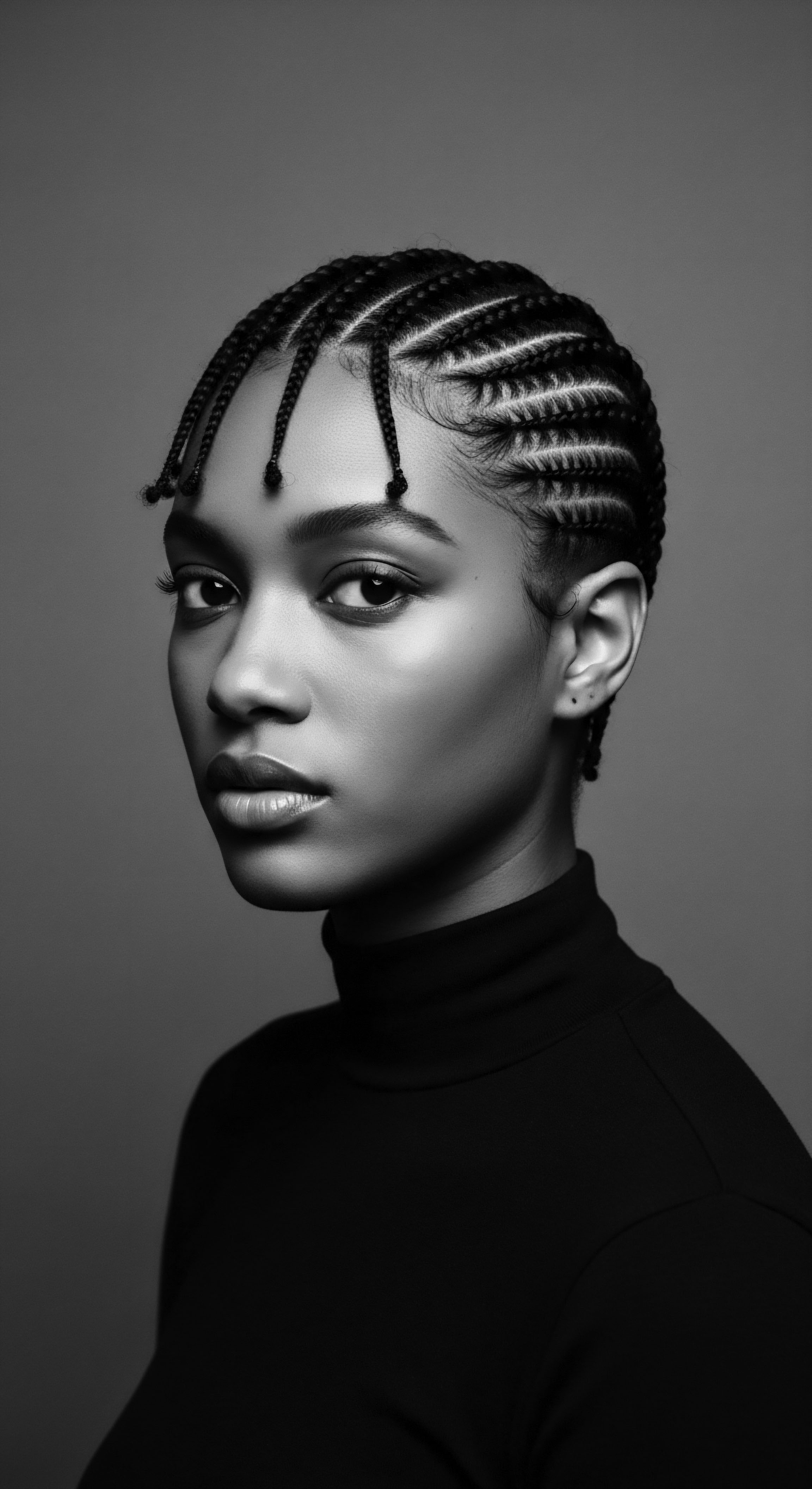
Connecting Ancient Rituals to Modern Hair Wellness
The echoes of ancestral hair care rituals reverberate in contemporary wellness practices. The emphasis on natural ingredients, scalp health, and protective styling, so central to the care of textured hair today, finds its origins in practices passed down through generations.
Consider the use of natural oils and herbs. Enslaved people, lacking access to conventional products, would have utilized whatever natural resources were available, such as animal fats, butter, or even kerosene, to moisturize their hair, albeit with varying degrees of efficacy and safety. This resourcefulness, born of scarcity, points to an underlying desire to nourish and maintain hair. In modern times, this ancestral impulse manifests in the widespread popularity of natural ingredients like shea butter, coconut oil, and various herbal infusions for textured hair care.
The ritualistic aspect of hair care, once a communal act of survival and cultural preservation, has evolved into a conscious practice of self-care and connection to heritage. The Chebe powder ritual from Chad, involving the application of a paste made from cherry seeds, cloves, and Chebe seeds to promote hair growth and luster, is a living example of how ancestral recipes continue to be cherished and passed down. This demonstrates a continuous thread of wisdom that connects ancient practices to contemporary hair wellness.
The significance of cornrows during enslavement is not merely a historical footnote; it is a foundational pillar of textured hair heritage. It speaks to an unyielding spirit, a capacity for innovation under duress, and a profound connection to cultural identity that transcends generations. As we continue to learn from these stories, we honor the legacy woven into every strand, recognizing hair as a powerful symbol of endurance, communication, and the enduring quest for liberation.

Reflection
The journey through the historical significance of cornrows during enslavement is more than a study of a hairstyle; it is a profound meditation on the enduring human spirit. It is a story whispered through generations, carried in the very texture of our hair, affirming that even in the face of unspeakable brutality, culture, identity, and hope found ways to persist. Cornrows, born of ancient African traditions, transformed into a powerful, silent language of resistance and survival on new, hostile shores. They were maps to freedom, vessels for sustenance, and unwavering symbols of an identity that refused to be severed.
This legacy reminds us that beauty, in its deepest sense, is not merely superficial; it is a manifestation of inner strength, a testament to ancestral wisdom, and a living connection to those who came before. As we care for our textured hair today, we participate in this ongoing narrative, honoring the ingenuity and resilience woven into each curl and coil, contributing to a living, breathing archive of heritage that continues to inspire and empower.

References
- Ajao, T. (2022). Black History Month 2022 ❉ The History Behind Cornrows. Beds SU.
- Allen, M. (2021). Braids, Plaits, Locs ❉ The History of Black Protective Hairstyles. Royaltee Magazine.
- Ancient Origins. (2022). African Slaves Used Braids to Communicate Escape Routes in Colombia.
- Byrd, A. & Tharps, L. (2001). Hair Story ❉ Untangling the Roots of Black Hair in America. St. Martin’s Press.
- Chimbiri, K. N. (2020). The Story of Afro Hair. Golden Square Books.
- Dabiri, E. (2019). Twisted ❉ The Tangled History of Black Hair Culture. Harper Perennial.
- Flowers, E. (2020). Hot Comb. Drawn and Quarterly.
- Gale Review. (2021). African Hairstyles – The “Dreaded” Colonial Legacy.
- Johnson, D. (2022). It’s Time We Recognised The History and Beauty of Cornrows. POPSUGAR Australia.
- Library of Congress. (n.d.). Heavy is the Head ❉ Evolution of African Hair in America from the 17th c. to the 20th c.
- Meadows, J. (2025). How Cornrows May Have Helped Free Slaves Navigate. The Carolinian Newspaper.
- Noireônaturel. (2024). How frizzy hair saved the lives of slaves.
- Oforiwa, A. (2023). The History and Culture of African Natural Hair ❉ From Ancient Times to Modern Trends. AMAKA Studio.
- Okpalaojiego, J. (2024). The Remarkable History Behind Black Hairstyles. University of Salford Students’ Union.
- Omotos, A. (2018). Hair was very important in ancient African civilizations. Journal of Pan African Studies .
- POPSUGAR Australia. (2022). It’s Time We Recognised The History and Beauty of Cornrows.
- Sartorial Magazine. (2025). Braids, Locs, and Beyond ❉ The Beauty and History of Protective Styles.
- The Afro Curly Hair Coach. (2022). Cornrows and The TransAtlantic Slave Trade.
- The Secret Meaning of the African Cornrows. (2019). Black owned business directory.
- Wikipedia. (n.d.). Cornrows.
- Wikipedia. (n.d.). Protective hairstyle.
